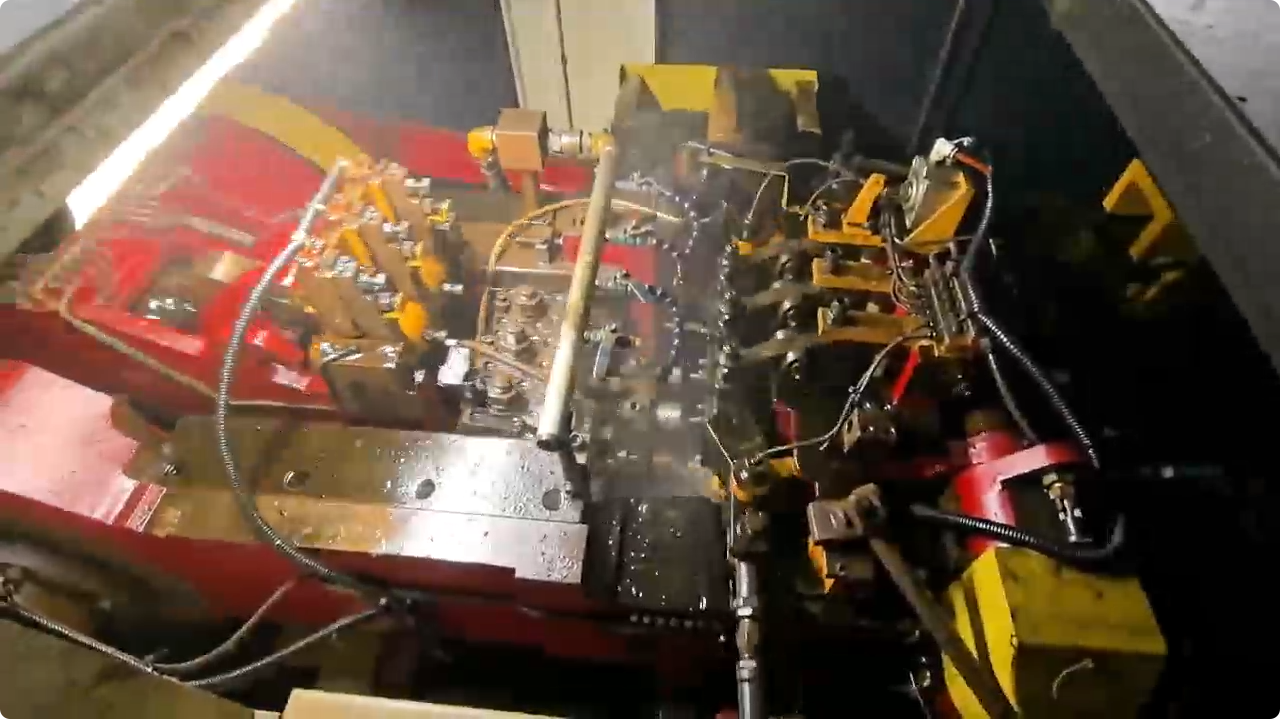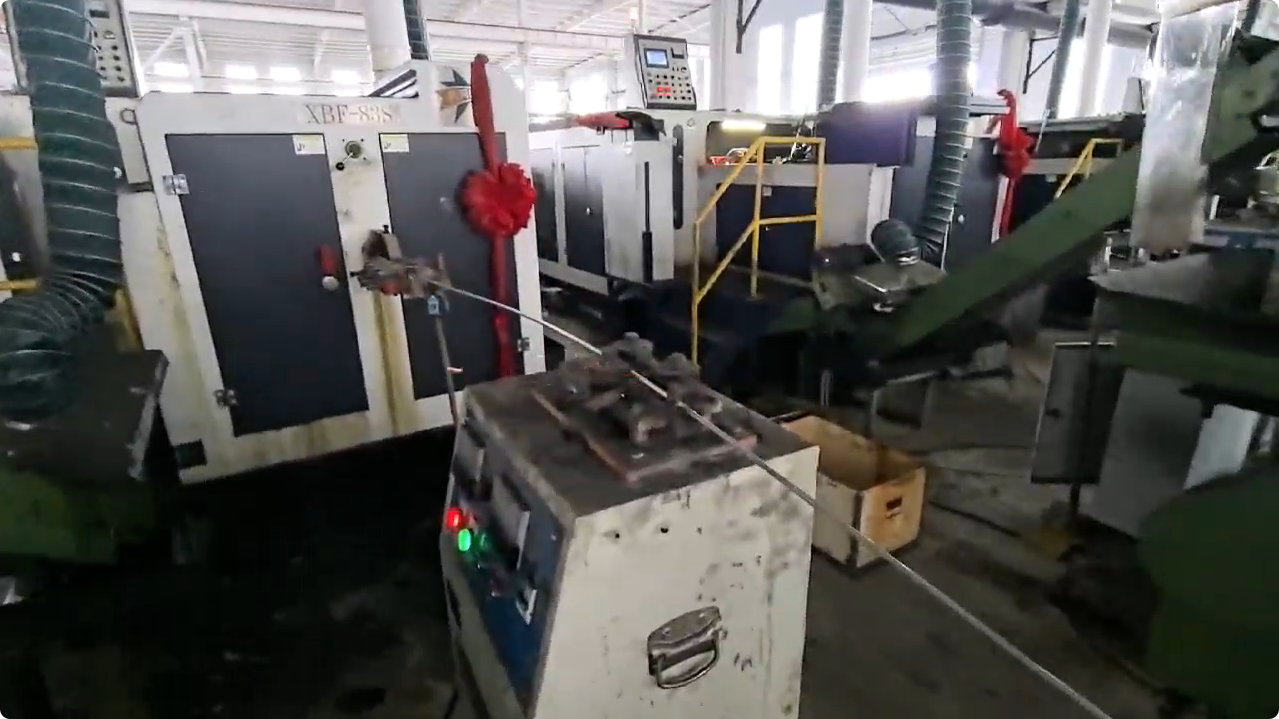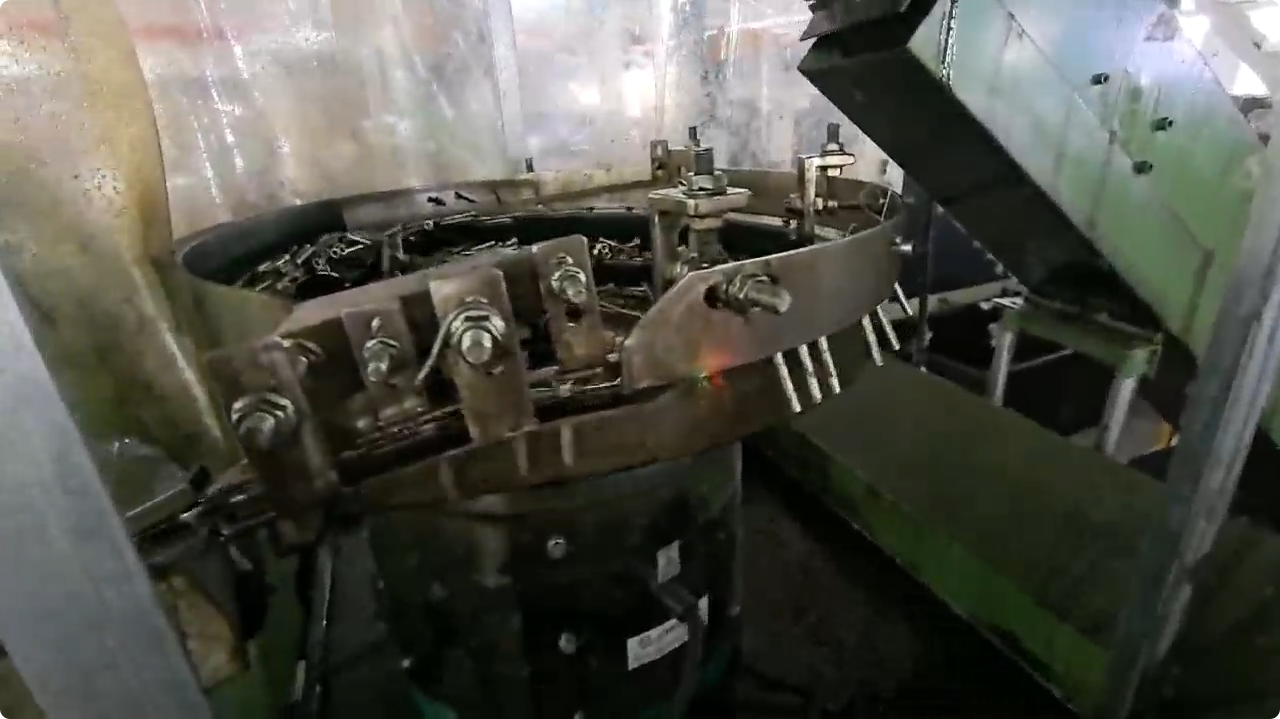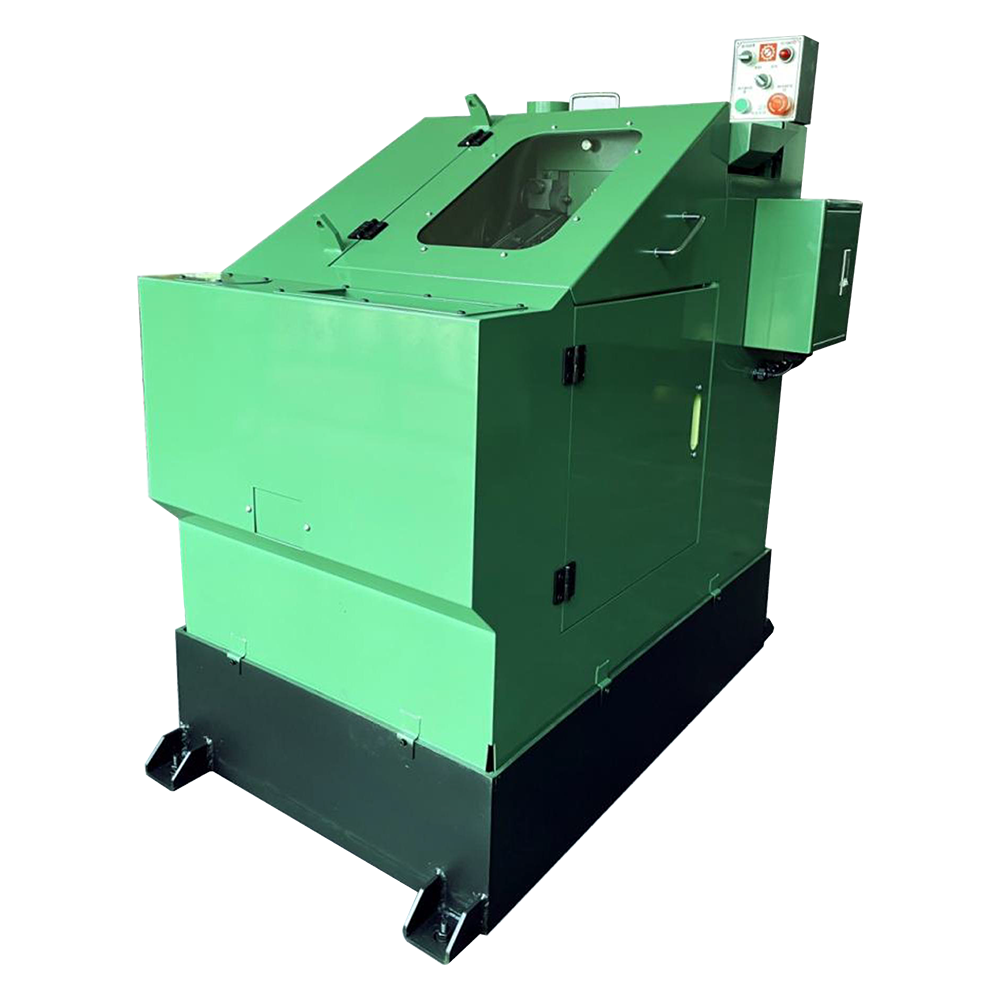High Powered Automatic Thread Rolling Machine is a precision equipment designed for rolling external threads on bolts, screws, and other fasteners. With its high power and automation features, this machine can continuously process multiple workpieces, greatly improving threading efficiency. The working principle of the thread rolling machine is to press the workpiece between rotating dies, plastically deforming the surface to form accurate and durable threads without cutting.
| Model | YTB-003 | YTB-004 |
| Blank Diameter(mm) | 0.6-206 | 2-4 |
| Thread Length(mm) | 15 | 25 |
| Moving Dies Stationary Length(mm) | 55*45*15 | 65*80*20 |
| Main Motor(HP) | 1/2HP 1/2HP 1/4HP | 2HP 1/2HP 1/4HP |
| Capacity PCS/MIN | 250-350 | 200-300 |
| Overall Dimenslon L*W*H(mm) | 1150*700*1080 | 1400*750*1380 |
| Weight Approx(kg) | 400 | 600 |



In modern manufacturing, efficiency and material savings are key priorities. High-powered automatic thread rolling machines excel in both, making them essential for fastener production.
Automatic thread rolling machines can produce threads much faster than traditional cutting or tapping methods.
Multiple operations happen in a single cycle, reducing setup time and speeding up output.
Thread rolling forms threads by deforming the material rather than cutting it away.
This means there is minimal scrap, saving raw materials and lowering costs.
By forming threads precisely, the machines reduce defects and the need for rework.
Fewer rejected parts mean less wasted time and resources.
Many thread rolling machines can handle multiple part sizes or integrate secondary operations, eliminating extra handling and further saving time.
High powered machines complete tasks faster, using less energy per part compared to slower, traditional methods.
